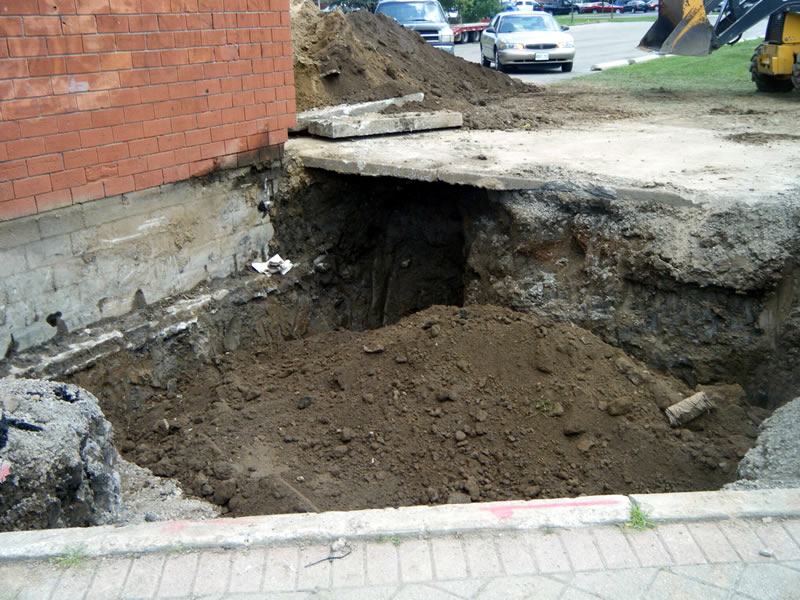Specialist Guide: How Basement Underpinning Can Change Your Home's Structure
Cellar support is a considerable architectural task that can have an extensive impact on the stability and durability of your home's structure. When considering this transformative procedure, there are vital variables to consider that exceed just the aesthetic appeal. From recognizing the signs that your foundation may require base to understanding the intricate process entailed, each step plays a vital role in ensuring a successful end result. By checking out the benefits, costs, and upkeep factors to consider related to cellar foundation, house owners can make enlightened choices that will not just boost their home but additionally offer satisfaction for many years to come.
Advantages of Basement Foundation

Furthermore, cellar underpinning can aid address structure issues such as cracks, resolving, or bowing walls. This procedure enhances the structure and stabilizes, stopping more damage and guaranteeing the long-lasting security of the framework. In addition, underpinning can increase the overall worth of the building, as a reinforced structure is a desirable function for potential customers and can enhance the resale value of the home.
Indicators You Need Underpinning
Process of Underpinning Your Cellar
The process of base includes reinforcing the structure of a building by expanding its depth or breadth to give added stability and support. Prior to beginning the foundation process, a comprehensive architectural analysis by a professional engineer is crucial to determine the ideal base technique for the details requirements of the building.
Once the evaluation is total, the underpinning process commonly starts with digging deep into areas beneath the existing structure in a critical fashion. This is carried out in regulated phases to stay clear of jeopardizing the architectural honesty of the building. The following step involves putting concrete into the excavated areas to develop a brand-new, stronger structure that gets to greater depths than the initial.
Throughout the underpinning procedure, it is necessary to check the work carefully to ensure that each phase is performed properly. Correct waterproofing and drain considerations should also be incorporated to stop any type of water-related issues in the recently underpinned basement (basement lowering toronto). By complying with these steps vigilantly, support can properly change a building's structure, giving durable stability and satisfaction for property owners
Price Factors To Consider for Underpinning
Cost factors to consider for underpinning vary significantly depending upon the dimension of the project, the picked foundation strategy, and the structural demands of the structure. The expense of underpinning a cellar normally ranges from $1,000 to $3,000 per straight foot. Factors affecting the price include the deepness of the structure, ease of access to the website, dirt conditions, and the demand for additional architectural assistance.
The chosen underpinning method will certainly additionally influence the overall cost. Standard mass concrete underpinning often tends to be extra cost-effective for smaller jobs, while advanced methods such as mini-piled base or beam of light and base support may be more expensive but are frequently required for larger or even more complex structures.
It is crucial to get multiple quotes from credible underpinning professionals to contrast costs and guarantee a fair cost. In addition, think about the long-term benefits of a well-executed foundation task, as it can improve the structural integrity and worth of your building in the years to come.
Maintaining Your Underpinned Basement
Having finished the foundation procedure for your cellar, making sure proper maintenance is important to protect the architectural integrity and longevity of your underpinned structure. Normal evaluations are important to spot any kind of indications of water infiltration, splits, or shifting in a prompt manner. Resolving these problems quickly can protect against more damage and maintain the stability of your underpinned cellar.
It is recommended to keep the basement completely dry by repairing any leakages and ensuring appropriate drainage away from the foundation. Mounting a sump pump or a dehumidifier can assist regulate wetness degrees and prevent water damage. In addition, maintaining consistent temperature and humidity levels can assist protect against concerns like mold and mildew growth and deterioration of materials.
Keeping track of the condition of the foundation wall surfaces and floorings is likewise important. Any brand-new cracks or adjustments in the framework ought to be assessed by a specialist to figure out if further fixings are essential. By staying positive and performing regular maintenance, you can prolong the life expectancy of your underpinned cellar and make certain a steady structure for your home.
Final Thought
In conclusion, cellar foundation is a transformative process that can reinforce the structure of your home, rise living space, and avoid architectural concerns. By recognizing the indications that support is needed, comprehending the procedure entailed, taking into consideration the expenses, and keeping the underpinned cellar, homeowners can make sure the long-lasting security and worth of their residential or commercial property.
Cellar support is a substantial architectural task that can have an extensive influence on the stability and longevity of you could try this out your home's structure.Cellar foundation offers various advantages for original site property owners seeking to enhance and boost the structural stability of their home's structure.Moreover, cellar underpinning can assist address structure issues such as fractures, working out, or bowing wall surfaces. Water leak in the basement, regardless of correct you could try here waterproofing measures, might be an indication of foundation issues that underpinning can resolve.Having actually completed the foundation process for your cellar, making certain appropriate upkeep is crucial to protect the architectural integrity and durability of your underpinned structure.